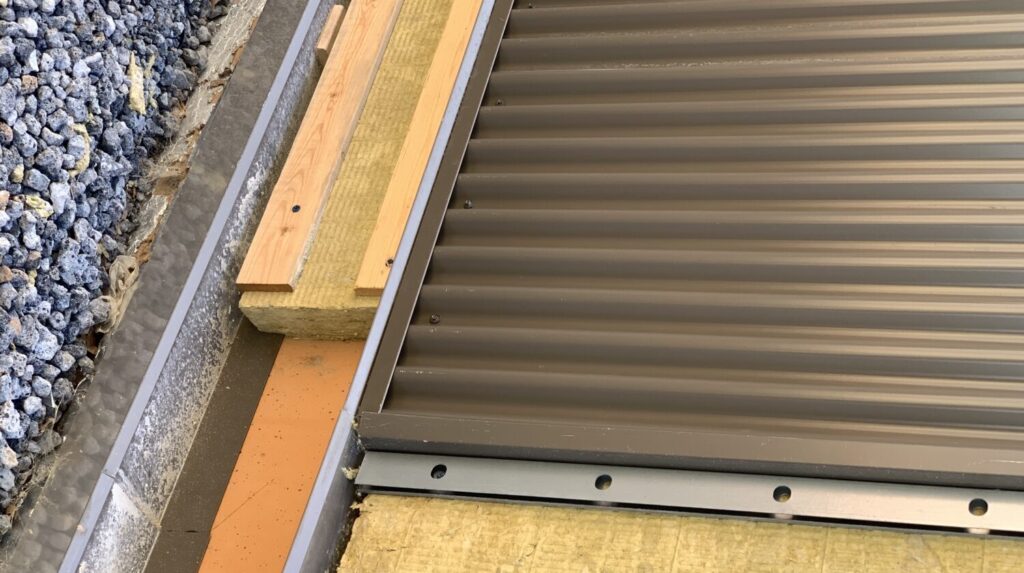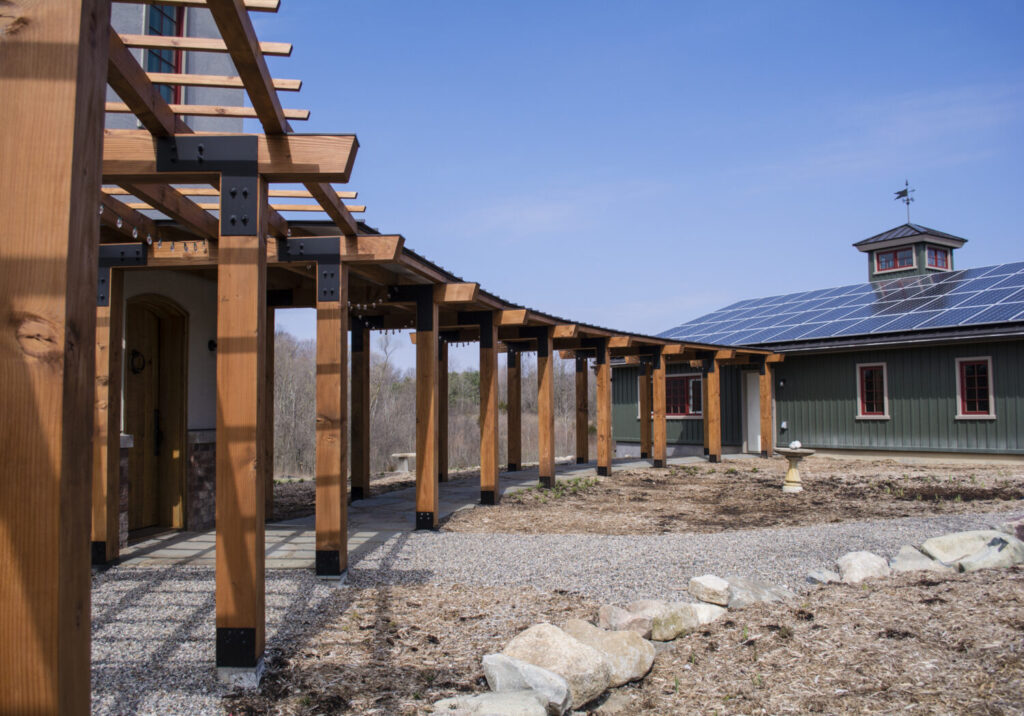Written By: Amanda Brookes, Catalyst Partners
As a homeowner, you’ve likely come across ecolabels, such as ENERGY STAR on appliances, Greenguard for paints, or FSC® on wood products, when running errands at your local hardware store. As a materials specifier, this list grows exponentially to include Environmental Product Declarations, Health Product Disclosures, Red List Free, and so many others. With thousands of building materials and products out there and the uncertain claims of “green” and “sustainable” being used to market a product to conscious consumers and materials specifiers, it’s difficult to wade through the many ecolabels to make meaningful decisions. Aligning products with environmental and healthy buildings goals will vary from project to project based on owner, occupant, and/or certification goals, so the effort of “materials vetting” or researching appropriate products can sometimes feel subjective and overwhelming. If there were only a rule book to follow to make informed, we could save time, money, reduce our environmental impact, and create healthier spaces for building occupants.
Here is a step-by-step strategy for creating a process to help you make those decisions…
Reuse. According to the Carbon Leadership Forum, “Approximately 30% of all global carbon emissions are attributed to the building sector, with at least 8% resulting from the manufacturing of construction materials.” Knowing that we can have a significant impact on carbon just through the materials and product selection process, the easiest, and sometimes most cost-effective solution to sourcing sustainable materials that will have a positive impact is to source a product that already exists. Since it’s just too easy to head over to Google to purchase something new, this may not always save on time – but it’s by far the best way to significantly reduce the embodied carbon* attributed to materials. This is where Google can help by searching for “material reuse center”. Most markets will return architectural salvage shops, non-profit organizations like Habitat for Humanity ReStores, and building material reuse centers.
While working on Burh Becc at Beacon Springs, an International Living Future Institute (ILFI) Living certified residence located in Ann Arbor, MI, vetting materials for Red List compliance was one of the hardest and most time consuming tasks in our achievement of the challenging certification. Material reuse saved our project team time and money on several occasions. We were able to source boards for the finished ceiling from Craig’s List, several of the unique lighting fixtures were found at a local architectural salvage shop, and the owners even picked up a concrete laundry sink from a neighbor’s curb. These selections resulted in a much more unique finished design that continues to tell their story many years after the project was completed.
*Embodied Carbon is the greenhouse gas emissions arising from the manufacturing, transportation, installation, maintenance, and disposal of building materials. (source: CLF)
Reduce. When re-use isn’t feasible, reduction is the next best strategy. From a materials selection standpoint, reduction can look a few different ways. First, it’s best to start with the reduction of the size of the home and to use the building’s structure as the finish material where feasible. These strategies immediately reduce the amount of materials required and can also result in cost savings for the owner. Next, consider materials that sequester carbon, such as wood products from sustainably managed forests and fast-growing bamboo, and materials with lower embodied carbon, such as metals with high-recycled content and low-carbon concrete mixes. Watch out for the high-carbon materials, such as aluminum, plastics, and foam insulation. These materials require energy- and water- intensive extraction and manufacturing processes that add to the greenhouse gas emissions within the building sector.
So how do you find low-carbon materials? At the 2022 Greenbuild International Conference + Expo in San Francisco, mindfulMaterials, a hub for action and a home for building material sustainability, launched their new materials portal. The portal creates a consolidated database of 300,000 materials and their impact across 5 pillars known as the Common Materials Framework: Human Health, Climate Health, Ecosystem Health, Social Health & Equity, and Circular Economy. While the database is currently geared towards commercial projects, many of the materials currently listed are also applicable to residential projects. Their filters allow users to search based on Product Category and Certifications + EcoLabels to simplify your efforts. Look for the EC3 Embodied Carbon filter to target materials with carbon emissions data. Specific to residential projects, ILFI’s Affordable Housing Guidebook is a great new resource. If you’re willing to pay a low membership fee, another extensive product resource is BuildingGreen’s Enhanced Product Guides, which includes 160 product guides that provide extra detail on choosing sustainable products and materials for your project.
The last strategy in reduction is to design to disassemble and reuse. With some thoughtful planning at connection points and the specification of fastening details in lieu of adhesives, materials can have a life again after their first use in a home comes to an end. It’s difficult to avoid all waste generation in construction, but establishing a cradle-to-cradle approach to both design and deconstruction ensures that reusable materials stay out of the landfill.
Advocacy + Transparency. Advocacy and transparency don’t round out the 3 ‘R’s quite like we were taught in grade school, but this aspect of material sourcing is one that can have an exponential impact on the industry and, in turn, those who occupy spaces. By purchasing materials and products that disclose ingredients and encouraging more manufacturers who don’t have disclosure to report their ingredients, transparency will become a norm just like a nutrition label on a box of your favorite cereal.
Knowing the ingredients – regardless of impact – can inform buyers of the social, environmental, and human health impacts of their selections. Both the mindfulMaterials Portal and Enhanced Product Guides previously mentioned include Environmental Product Declarations (EPDs) and Health Product Declarations (HPDs) in their databases, which disclose the life cycle assessment and potential health-related hazards, respectively. Look for the third-party verified declarations for an added layer of assurance.
If you want to go the extra mile to source Red List Free materials that avoid nearly 7,000 of the “worst in class” materials, chemicals, and elements known to pose serious risks to human health and the greater ecosystem that are prevalent in the building products industry.”, the Declare product database will be your best direct resource. Filter by “LBC Red List Free” to find hundreds of products and materials that have disclosed all ingredients and that are free of the Red List chemicals. And the next time you purchase a material or product that doesn’t already have this label, reach out to the company to encourage them to ‘declare’ their product.
Vetting materials for any size project can be a daunting task. By keeping a list of the materials being considered and how their sustainability attributes support the overall project goal will allow the vetting process to be much more objective and manageable. It also helps to keep the big picture in mind when getting lost in the minutia of materials ingredients – with each purchase we have the power to eliminate harmful chemicals, reduce our carbon impact, and support regional economies through locally-sourced materials.







